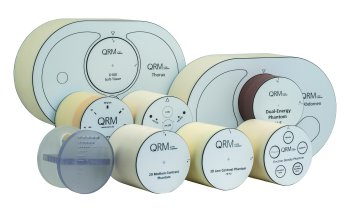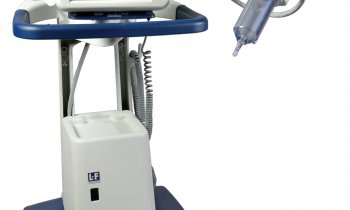© samunella – stock.adobe.com
Article • Photon-counting CT, strain imaging, 4D flow MRI
How new technologies shape the future of cardiovascular radiology
New approaches to cardiovascular radiology are evolving to help clinicians gain an increasingly better insight into heart conditions. Latest developments in cardiovascular radiology include myocardial strain imaging, 4D flow and photon-counting CT technology. An ECR 2024 session shone the spotlight on these areas of cardiovascular imaging with expert speakers outlining the pros and cons of each.
Report: Mark Nicholls

Dr Hatem Alkadhi, Vice Director of the Department of Diagnostic and Interventional Radiology at University Hospital Zurich in Switzerland, explained that photon-counting CT offers two advantages: spectral information and ultra-high resolution.
He said the inherent spectral information is always available, thanks to the dual source principle of the scanner, at the highest available temporal resolution. ‘That means we can do several post-processing issues – reconstruct virtual monoenergetic images, subtract calcium from iodine and look at the myocardium at high quality. The ultra-high-resolution mode is very interesting for dense calcifications, plaque imaging and visualisation, stenosis quantification and coronary stents imaging.’
PCCT: Promising, but not without flaws
Alkadhi said one of the biggest benefits of spectral data acquisition is the images are virtual mono-energetic. He pointed to study results comparing patients scanned with a third-generation dual source conventional energy integrating detecting CT machine and then with a photon-counting detector CT,1 which showed clear benefits of the new technology. With matched protocols, radiation dose and contrast media, the photon-counting CT delivered ‘a net increase in contrast to noise ratio (CNR) of up to 70% when you look at vascular imaging.’ That translates into improvements in image quality with lower contrast media.2,3
He concluded: ‘We have excellent performance characteristics for photon-counting detector CT for cardiovascular imaging in regard to signal, noise and CNR, which we can use to improve image quality and/or save contrast media, which may be important in vulnerable patients.’ There do, however, remain issues over which scan mode to apply in which patient – spectral or ultra-high-resolution acquisition – or both, and which is best for assessing the stenosis. He noted that the PureLumen algorithm for virtual calcium removal still needs to be more robust to be applied in clinical routine.4
Myocardial strain imaging: hearts in motion

Radiologist Dr Tilman Emrich from the Department of Diagnostic and Interventional Radiology at the University Medical Center in Mainz, Germany, highlighted the benefits of myocardial strain imaging, its applications and how it can be used as an imaging biomarker. ‘Strain imaging is all about deformation, the alteration of shape or volume of body by a force,’ he said. ‘This is happening in the heart while it contracts. We see the alteration of volume by the contraction and we can measure this deformation in several parameters.’5
This, he continued, can connected to different layers of the heart muscle which have different properties and are responsible for certain motion aspects in the heart.6 ‘The 3D motion pattern can be divided into longitudinal, circumferential (rotation) and radial patterns and we can look at these deformation patterns and try to connect which layer of the muscle is affected,’ said Emrich.7
Strain images enables cardiac radiologists to conduct segmental analysis, such as in myocardial infarction, and the detection of subclinical changes of the left ventricle, e.g. in genetic diseases or after treatment with chemotherapy. In addition, strain imaging offers insights into prognostic effects of various cardiomyopathies.
While acknowledging that myocardial strain imaging offers a number of insights and is highly promising, Emrich said there is a need to standardise the technique before it can be used as a clinical tool.
4D flow: fluid mechanics with solid potential
4D flow allows calculation of unique fluid mechanical parameters, though the full diagnostic/prognostic potential still has to be explored
Ursula Reiter
Dr Ursula Reiter from the Department of Radiology at the Medical University of Graz in Austria discussed how 4D flow is a valuable tool in state-of-the-art cardiac MRI. It provides simplified acquisition and accurate quantification as a time-resolved, three-dimensional, three-directional, velocity encoded phase contrast imaging. The four sequences enable calculation of the 3D velocity through the cardiac cycle, supported by guidelines and expert recommendations on how to adapt these protocols with respect to spatial and temporal resolution.8,9 ‘We can use these parameters of elevated stress as possible risk stratification,’ she added.
Summarizing her insights, Reiter pointed out that 4D flow can be relatively straightforward to assess with a whole heart body flow conducted within 10 minutes. She added that 4D flow allows visualisation of flow patterns and accurate velocity quantification and flow quantification can be performed through any a posteriori defined cross section. ‘4D flow allows calculation of unique fluid mechanical parameters, though the full diagnostic/prognostic potential still has to be explored,’ the expert concluded.
Profiles:
Professor Hatem Alkadhi is Vice Director of the Department of Diagnostic and Interventional Radiology at University Hospital Zurich in Switzerland. His specialist areas are multimodal cardiovascular imaging, emergency radiology and computed tomography.
Dr Tilman Emrich is working as an attending radiologist specializing in cardiovascular imaging at the University Medical Center Mainz, Germany. In parallel, he serves as an Adjunct Assistant Professor of Radiology and Director of Photon Counting CT Research at the Department of Radiology and Radiological Science, Division of Cardiovascular Research, Medical University of South Carolina, USA.
References:
- Euler A et al.: High-Pitch Photon-Counting Detector Computed Tomography Angiography of the Aorta: Intraindividual Comparison to Energy-Integrating Detector Computed Tomography at Equal Radiation Dose; Investigative Radiology 2022
- Higashigaito K et al.: CT Angiography of the Aorta Using Photon-counting Detector CT with Reduced Contrast Media Volume; Radiology – Cardiothoracic Imaging 2023
- Cundari G et al.: Saving Contrast Media in Coronary CT Angiography with Photon-Counting Detector CT; Academic Radiology 2023
- Mergen V et al.: Virtual calcium removal in calcified coronary arteries with photon-counting detector CT—first in-vivo experience; Frontiers in Cardiovascular Medicine 2024
- Pedrizetti G et al.: Principles of cardiovascular magnetic resonance feature tracking and echocardiographic speckle tracking for informed clinical use; Journal of Cardiovascular Magnetic Resonance 2016
- Watson SR et al.: Imaging technologies for cardiac fiber and heart failure: a review; Heart Failure Reviews 2018
- Claus P et al.: Tissue Tracking Technology for Assessing Cardiac Mechanics: Principles, Normal Values, and Clinical Applications; JACC Cardiovascular Imaging 2015
- Dyverfeldt P et al.: 4D flow cardiovascular magnetic resonance consensus statement; Journal of Cardiovascular Magnetic Resonance 2015
- Bissell MM et al.: 4D Flow cardiovascular magnetic resonance consensus statement: 2023 update; Journal of Cardiovascular Magnetic Resonance 2023
27.03.2024











